by Olivia Ladanyi, studio photos by Ryan Molnar // July 18, 2023
Fette Sans welcomes us into her Prenzlauer Berg studio on the first really hot day of the year. The glass-fronted, ground floor space, draped in sensual purple crocodile velvet, offers plenty of shade but little cool. Despite the light pouring in through the frosted glass, preventing people looking in from the street, the opulent textures, chaotic clutter and seedy glamour make the space feel darker, heavier and more loaded than it actually is. Dominating the room is a huge mahogany desk that Sans is trying to give away before she moves to Croatia part-time. She enquires if any of us might want it. Or perhaps something else catches our eye?
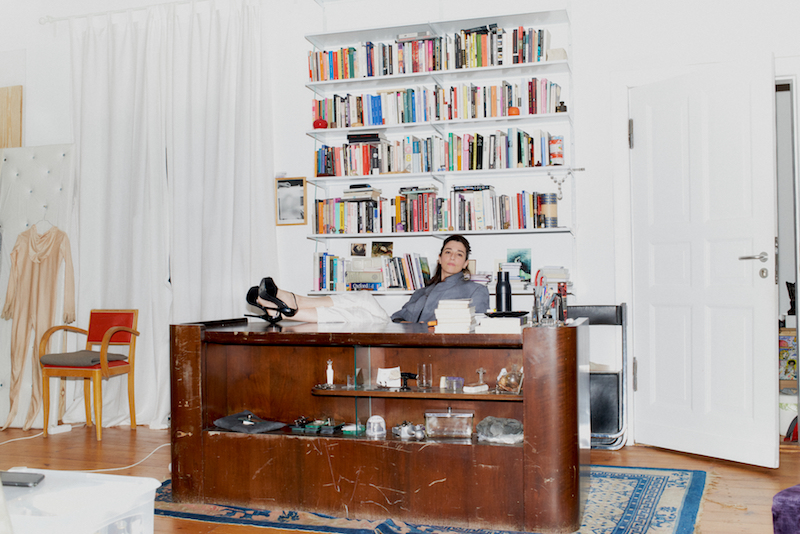
To say that one thing catches my eye is to choose between the tens of curious objects that litter the space: a long blonde wig on a mannequin’s head; a crystal chandelier lying arbitrarily on a staged bed; knives; handcuffs; a (real) cat and its cardboard-box bed; a gaping ceramic mouth; leather restraints; nipple clamps; a full-body nylon suit; a full-face mask; a studded headboard; mirrors; make-up; pills; framed photographic prints recalling Sans’ photography background; and endless wires that snake their way across the floor, tangled and connected to various screens displaying previous work, over which she is eager to launch into discussion. One thing that nearly all of the studio’s population of treasures have in common is their connection to desire and insubordination, and a feeling of being just outside the normalised realms of decency. There is a sense of stepping into a forbidden space, where boundaries, sexuality, kink, consent, mental health and substance use are explored boldly through physical, digital and online performances.
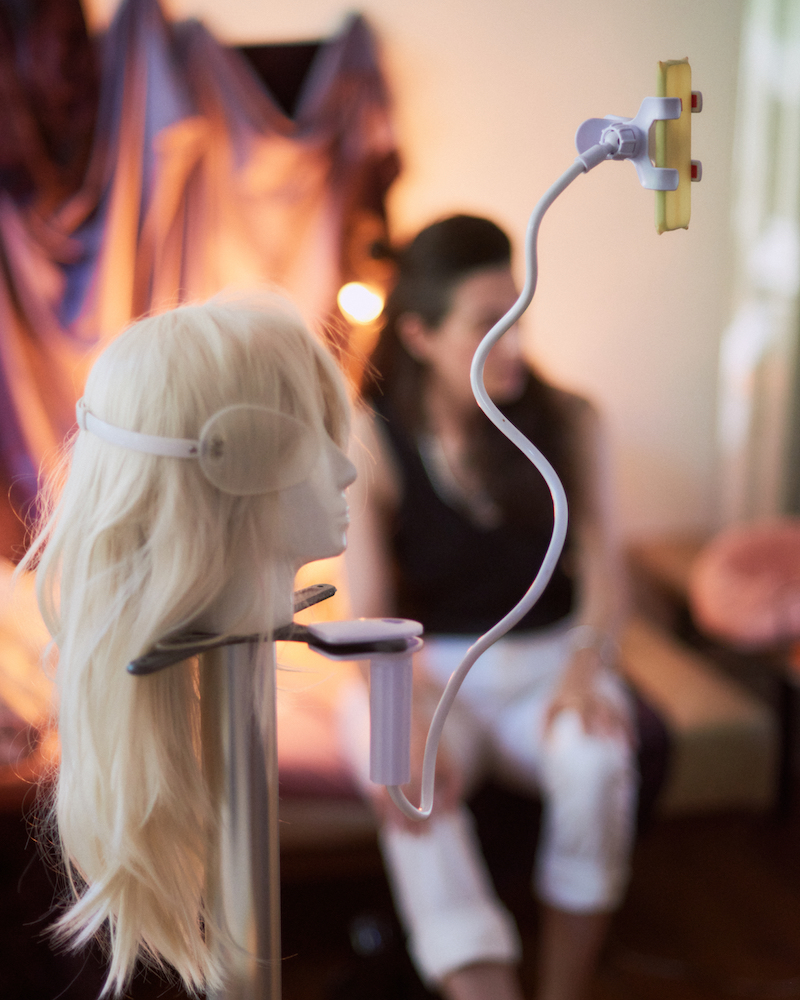
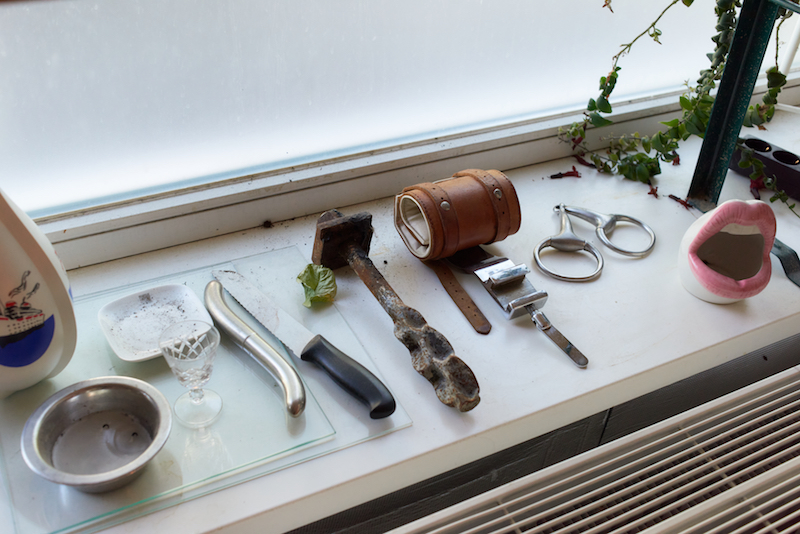
As we perch on the corner of the foam mattress, which we later learn is where she performs her prosthetic-wearing chatroom alter ego, Fette Sans (the pseudonym is a play on font names, but could easily be misconstrued for something more lurid in both German and French) turns on a screen and begins to tell us about the sets she builds for her performances. These “minimal settings” provide the environment for Sans to pre-record content that she then combines with live material, putting into question what is happening now and what is real — a thread that runs throughout her work. “I’m interested in how you keep residue of images,” she tells us. “Something you are experiencing in real time and something that you experience through a screen will essentially be stored in your memory the same way. There is no such thing as a oneness of memory and reality. So I construct reality through images.” Her work exists in two parts, she informs us: online—through videos—and through the leftover objects that relate to these performances.
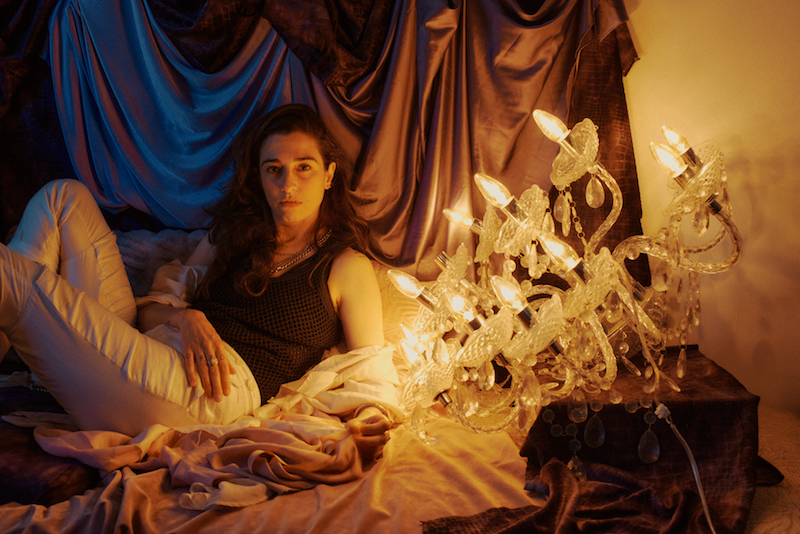
First, Sans shows us footage from ‘If I can’t sleep at night is it because I am awake in someone else’s room?’, wherein she lived and performed from a hotel room for five months. The room became her studio and her stage, as well as her retreat from those pressurised spaces. At the end of each month, as part of a “cycle system”, Sans offered a public performance, opening the space up by inviting people either to physically enter the room or via a digital stream. Taking action and reading from a script, Sans performed mundane repetitive gestures, “broadcasting nothing”: two characters can be seen browsing their phones, folding towels, looking out of the window. Streamed directly to YouTube, the security camera, webcam and iPhone footage was live-edited, combining videos playing from her laptop with screenshots of sexts coming through live, allowing Sans to construct the reality being fed to viewers.
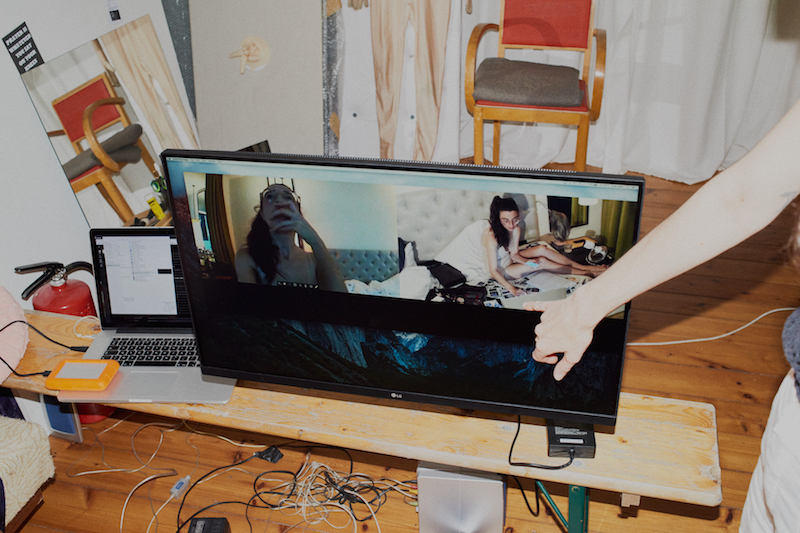
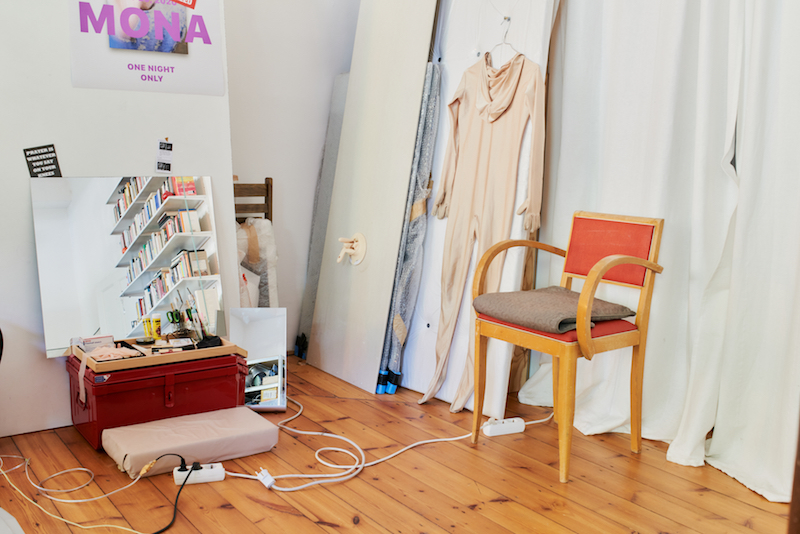
The studio is an archival graveyard of the sets that Sans has built to create these half-realities, which thrown together in this space amount to one amalgamated reality, where her work is born, re-used and later put to rest. Although her sets are site-specific, Sans often dismantles and reuses them for different projects. Recognisable elements thread throughout her practice, reappearing in subsequent performances and offering a backdrop for how she intends us to interpret the scene. For example, versions of the handmade leather headboard have appeared in installations ‘The night would lie during the day?’ and ‘The bitter ends of (the technologies of tenderness)’, recalling the bed from the hotel residency and resulting in the ongoing series, ’Models of Adaptation’, which incorporates padded cell elements from a psych ward. As a result of Sans’ choice of materials and contextualisation, these objects become synonymous with forbidden transactions, sex and sex work. Although Sans leads us there knowingly and cunningly, the viewer makes these associations independently. By making these loaded visual prompts detachable and transportable, Sans can place them into different environments, instantly imbuing her performances with a sense of something more illicit.
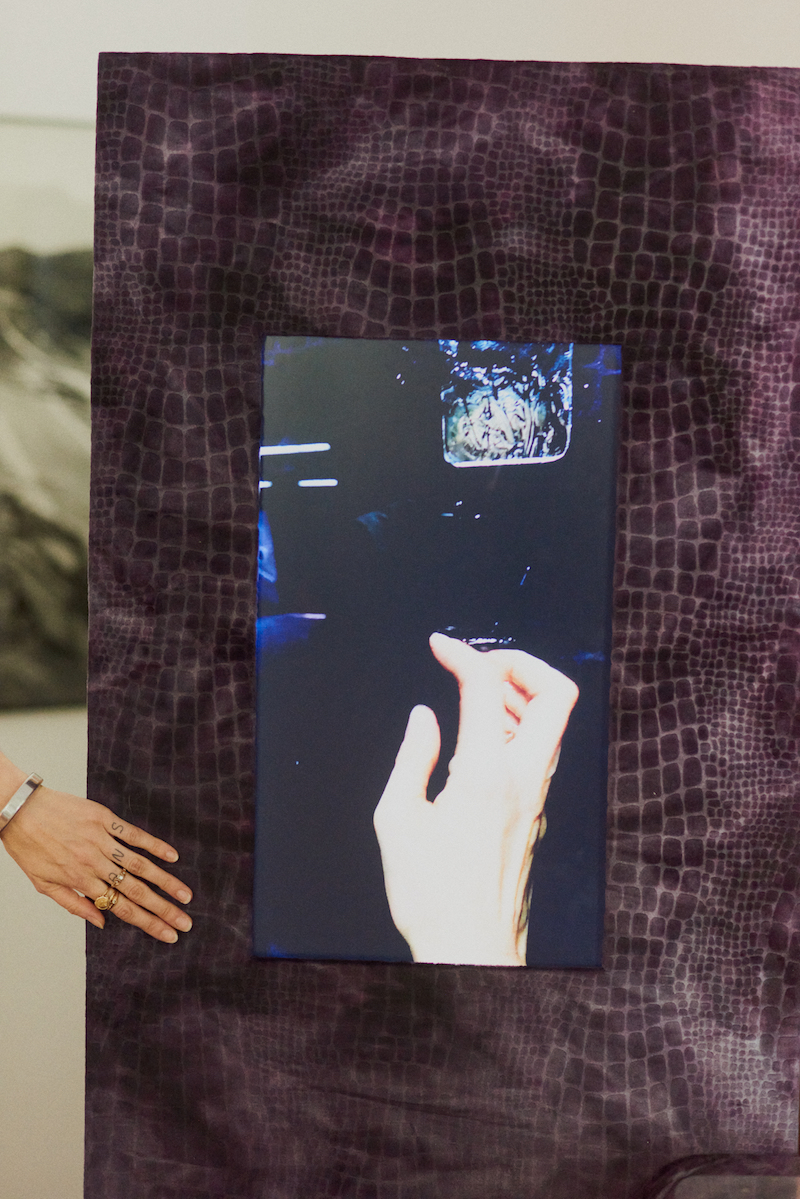
Fette Sans can be found in the studio on her laptop, researching, writing and editing, or donning a wig and prosthetics to perform on Chaturbate for a project she has just started developing. The character she is in the process of creating is quite obviously not a real person, but Sans toys with the potentially uncomfortable chasm between performance and reality with experience and ease. The performance, which will (in true Sans nature) straddle the online and real-life stratospheres, implies camgirling—a kind of sex work—despite Sans never being naked or performing anything overtly sexual. It also gives Sans a platform to explore her interest in what being online “of a certain age” means and in how art sees sexuality. “Porn is not seen as high art, but what I’m doing is also not porn—I’m not getting naked, I’m not performing any sort of things like this, but through voyeurism, a malaise is hinted at,” she explains. “I am the porn clown.”
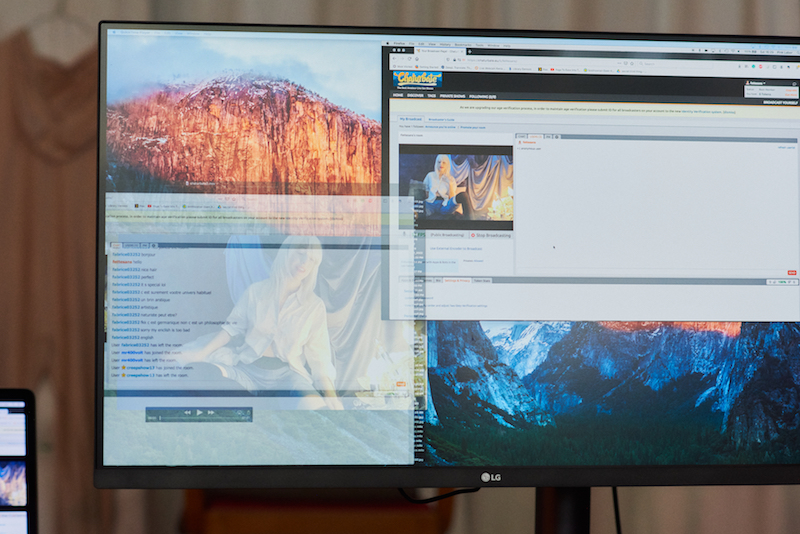
Sans’ character creation is a result of her interest in and exploration of the hierarchical nature of entertainment and those who provide it. “The figure of the entertainer takes on a myriad of faces and hierarchies,” she explains. The porn clown is, for Sans, a contemporary expression of an “ornamental hermit”: a 19th-century invention that came with the industrial invention of the landscape, where it became fashionable for estates to have an on-site hermit (a poet, artist, astrologer, etc.) Like the trope of a court jester, the ornamental hermit was not necessarily someone with whom it was desirable to interact. Rather, they were used to communicate a unique and intriguing aesthetic language. Traditionally gendered masculine, the ornamental hermit is blended together with the reclining female figure in Sans’ world, to create her own manifestation of the artist as performer-entertainer. Her performance personas are at once clown, jester, entertainer and artist, whose identities rely entirely on the existence of an audience and the murky transactional dynamics at play. And yet—reliant on technology to maintain this relationship and separated from her audience by a screen—Sans’ work gestures toward absurdity, awkwardness and even loneliness.
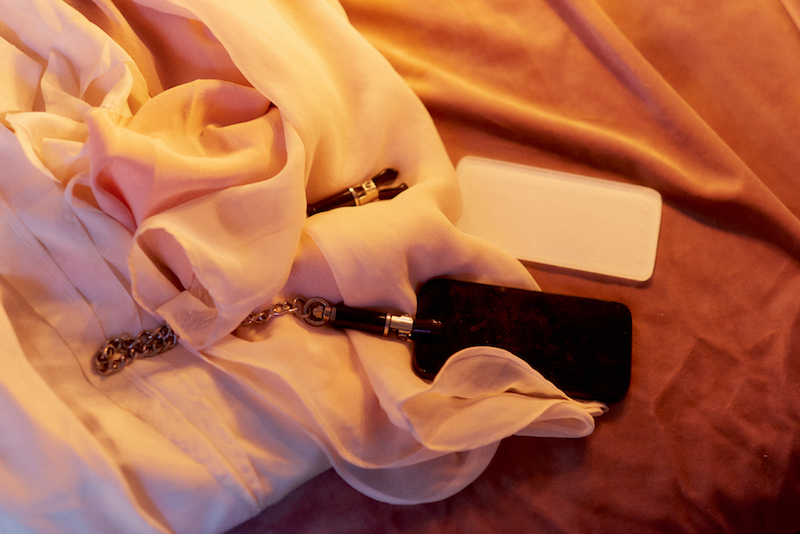
Walking over to a set, which she carpentered herself here in the studio, cushioned with the same purple velvet fabric as the sofa, Sans sticks her hand in a “glory hole” in the seat. When she pulls it out again, it is covered in lube. The structure was used in ‘Resonance of an awkward smile’, where Sans performed from inside a box in Ung-5, at an U-Bahn station in Cologne. The performances were both announced and unannounced, at night and during the day. Inside the box was also her laptop, which was connected to a TV and speakers, from which she played music and recordings she had taken of the people looking in. The dark fabric made the glass super reflective, meaning that “people walking past would see themselves before seeing me, not expecting to see a person in a box, creating this weird tension of both the theatricality of me and of them being observed by me.” Exercising eye contact in an unthreatening way, Sans created moments of interaction where it was unclear who was observing whom. She smeared lube and wrote her phone number across the glass, inviting onlookers to text and enter into conversation with her. Sans often gives out her phone number in live and online performances, delivering her end of the sexually-implied transaction. After each performance, Sans would store pills that she had made inside, meaning the installation evolved throughout the month that she was in there. Now, the screen is paused on a frame of a selfie of the artist over-imposed with magenta text that reads: “Yes, at this moment I’m only myself sinking into something darker than myself.”
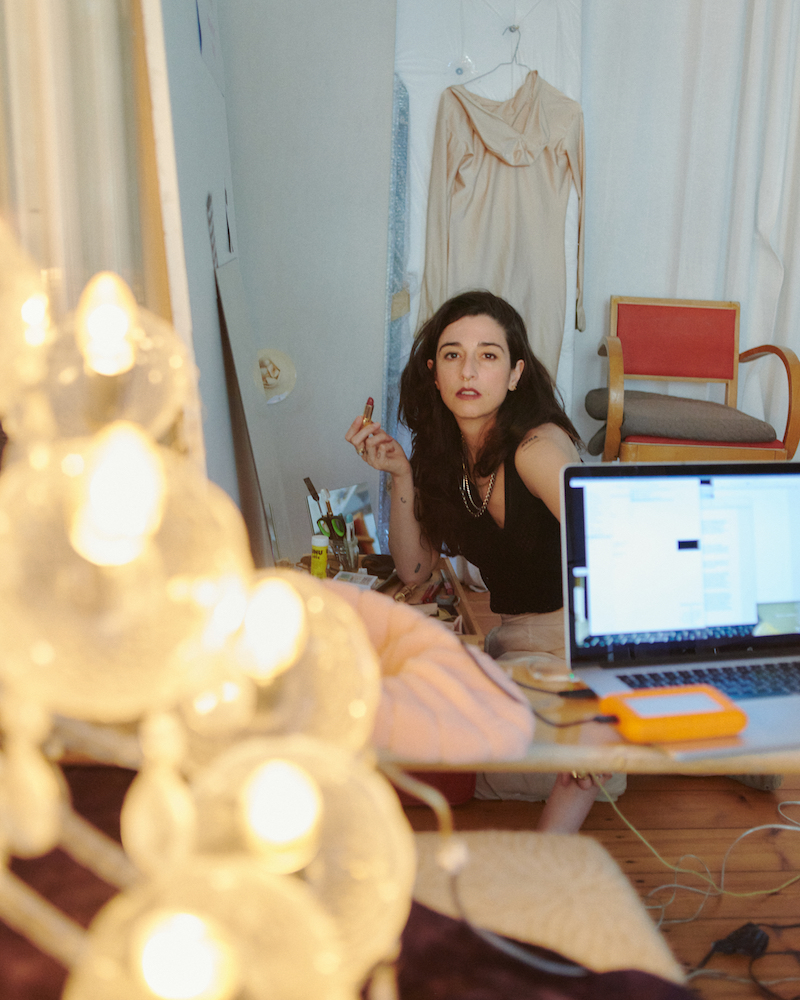
Sans’ use of technology allows her to explore the intimacy and disconnection that co-exist, however awkwardly, in her work. “With online sex workers, there’s a proximity and a distance that often exists simultaneously,” she explains. In viewing Sans’ performances, we automatically become voyeurs and enter into a transaction with her. It is within this psychological space that Sans likes to experiment — by suggesting something beyond what we are actually seeing, she plays with reality while forcing us to confront our own associations and assumptions. Through the dynamics and aesthetics of performative exchange, Sans points to the ways in which entertainment, sex work and art are intimately entwined. Simply by sitting in front of a webcam, writing her phone number on glass or asking you to touch her hair through a screen, she constructs intimate interactions that can never quite come to fruition, highlighting the gaps and misunderstandings inherent in all attempts at relationality, whether online or off.






















